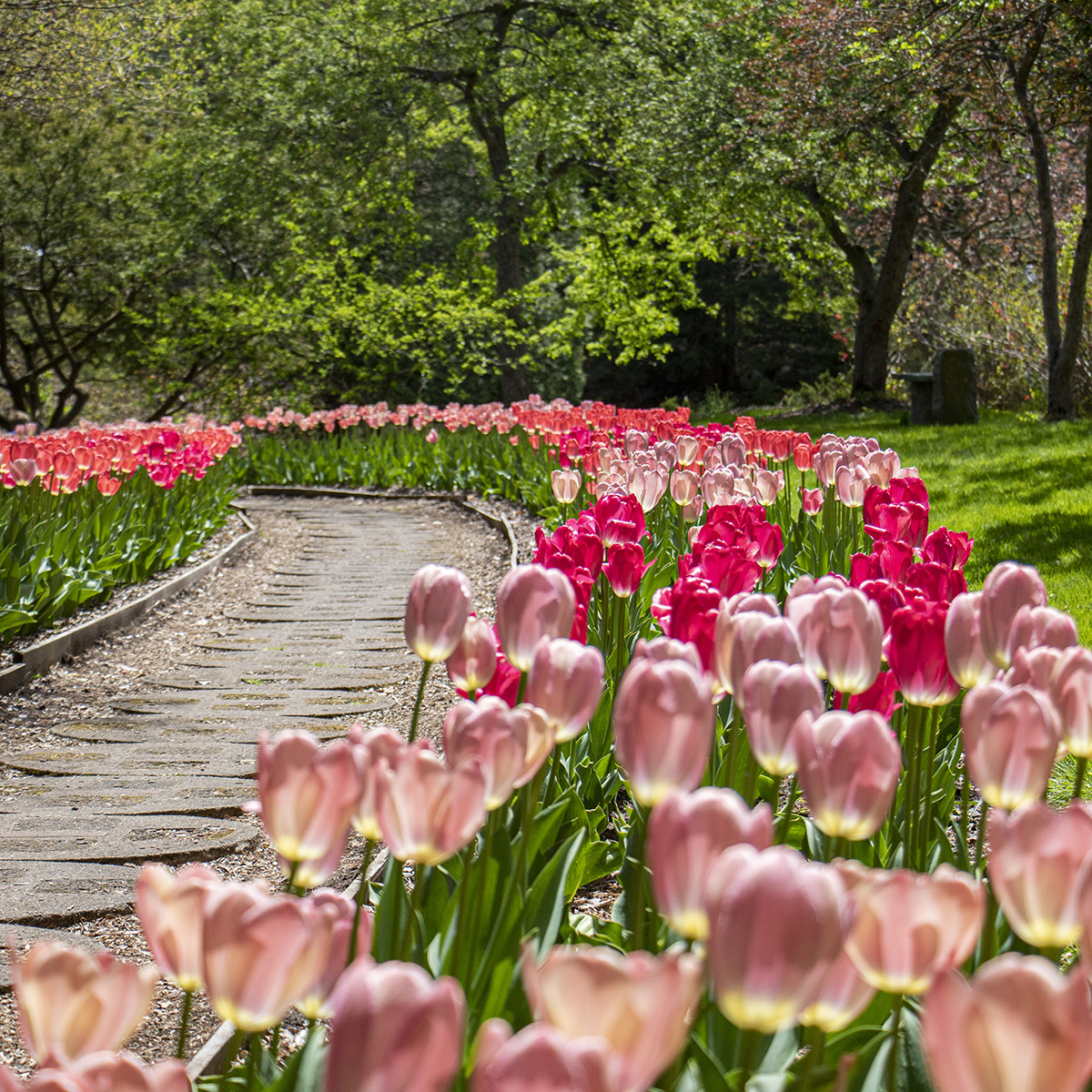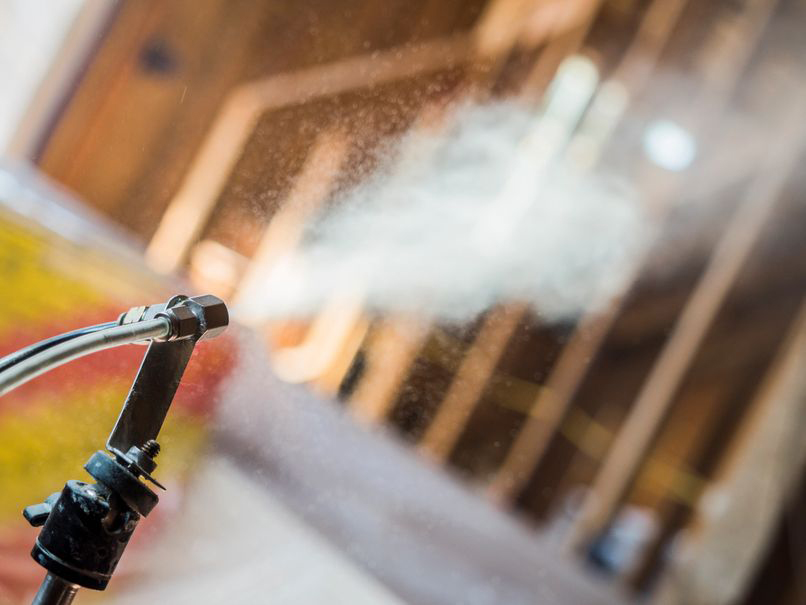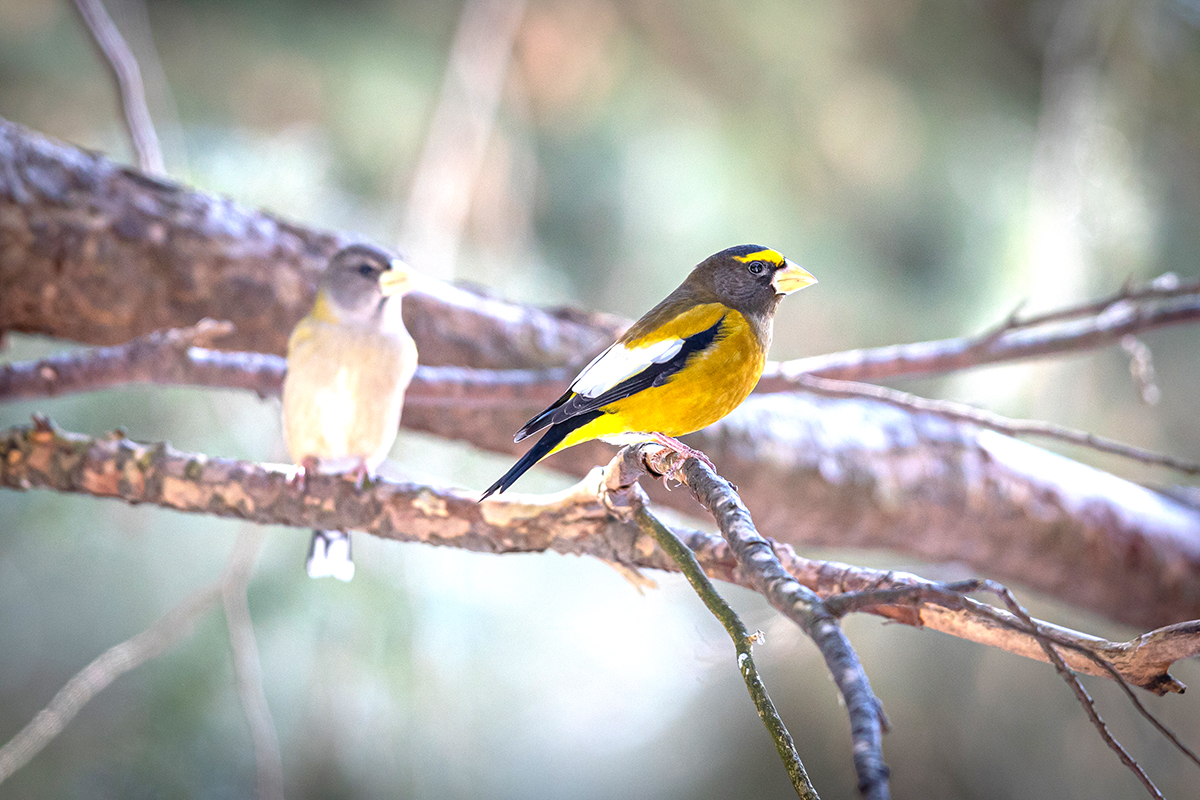WRITER | SARAH SPOHN
PHOTO | JACOB BROWNING
We in the Great Lakes State celebrate the beauty of nature throughout the four seasons. While spring and summer are generally considered the ideal time to visit gardens, many nature centers across the state are open year-round, offering spectacular displays of flowers, plants, waterways, and more.
Have you ever visited a garden and pictured taking some of that inspiration home to your own yard? Here are a few tips for creating the garden of your dreams from Dow Gardens Curator and Horticulturalist Jacob Burns.
Dow Gardens is located in Midland and features a 110-acre display of annuals, perennials, waterways, bridges, children’s garden, towering pines, and more. Every year, the garden sees over 300,000 guests. As curator at the center, Burns’ job is to ensure the plant collection is growing and diversifying. He describes Dow Gardens as great inspiration for the homeowner interested in a lower-maintenance gardenscape than formal gardens.
“Dow Gardens would appeal to someone who likes a more naturalistic design,” he said. “If you’re a Michigan gardener, you can get a good idea of hardy plants that will do well in this state.” Given that mid-Michigan often has acidic soils, Dow Gardens is full of rhododendrons, Pieris, azaleas, and hollies. Although those particular plants are at peak for viewing in the late spring or early summer, Burns suggests visiting the gardens more than just once a year.
“Winter is a great time to come here, too,” he said. “I say come seasonally because each plant puts on a show at a different moment in the year. Whether it’s the blooms, the berries, the fall color, the evergreen foliage, the tulips in spring, rhododendrons in early summer, or the prairie garden of wildflowers in midsummer, there’s always inspiration around every path.”
When it comes to planning a garden, it makes sense that you’d want to see what plants pop up and do well in the cold-weather months as well, considering Michigan is full of them. “You don’t want your whole garden to bloom only in the spring,” said Burns. “You can still have your garden look great in the wintertime by having the right plants.”
Burns also recommends that first-time gardeners or new homeowners be patient and realistic with their vision and garden plans. “I don’t think you should jump into buying plants,” he said. “Before you buy a single plant, just observe and pay attention to the sunlight patterns in your yard. You should dig in every corner of your yard and make sure the soil is the same. Most likely, it won’t be. You’ll have wetter areas and drier areas. It’s important to know the soil and the light patterns, more than anything.”
Once you determine those patterns, you will fully understand what types of plants and flowers will thrive in your given space. Now you can decide if a shade garden versus all-sun plants or even low-maintenance plants can survive the drought areas of your yard.
“Assess the yard, maybe even for a full year,” Burns said. “Make sure you get a feel for everything and start small. Start from the foundation plantings and work your way out. Don’t start a garden halfway across your yard.”
Another tip Burns gives to at-home gardeners is to do your homework when it comes to bloom times. “Do some research beyond going to a box store and buying whatever plants they have on the shelf,” he said. “Those plants might be in bloom when you buy them, but it doesn’t mean they’re going to be in bloom at the same time next year. Many nurseries will force plants to bloom sooner just so they can get them on the shelves.”
Consumers tend to purchase blooming plants even if the bloom time is off. “Do the research and find a plant’s actual bloom time for your state,” Burns said. “If you plan a whole garden around what’s blooming on the shelf at the store, it might not work out the next year the same way.”
A day trip to your favorite nature center or a garden such as Dow Gardens, Frederik Meijer Gardens & Sculpture Park, or Fernwood Botanical Gardens may leave you feeling overwhelmed. Burns encourages you to take heart. “If you see something grand and really cool, don’t be discouraged if you don’t think you have the space or can’t afford it. Take that idea and make it work for you. Don’t try to replicate it exactly, plant by plant or brick by brick. There’s always a way to recreate it on a smaller scale.”








